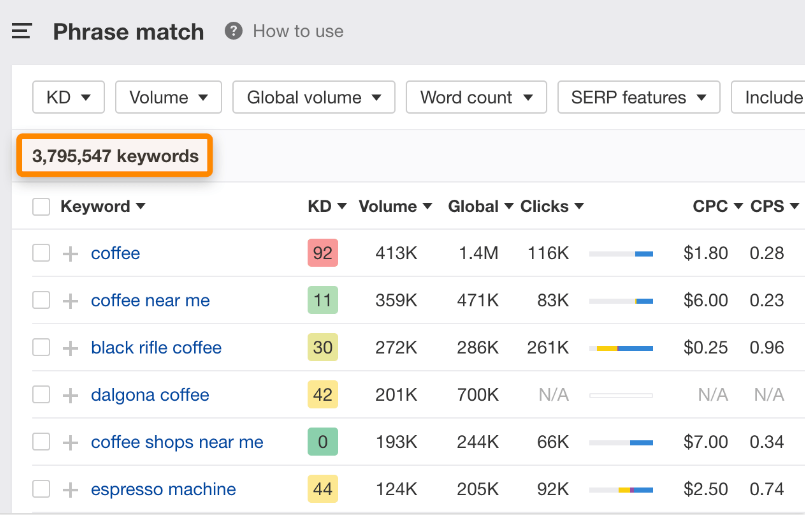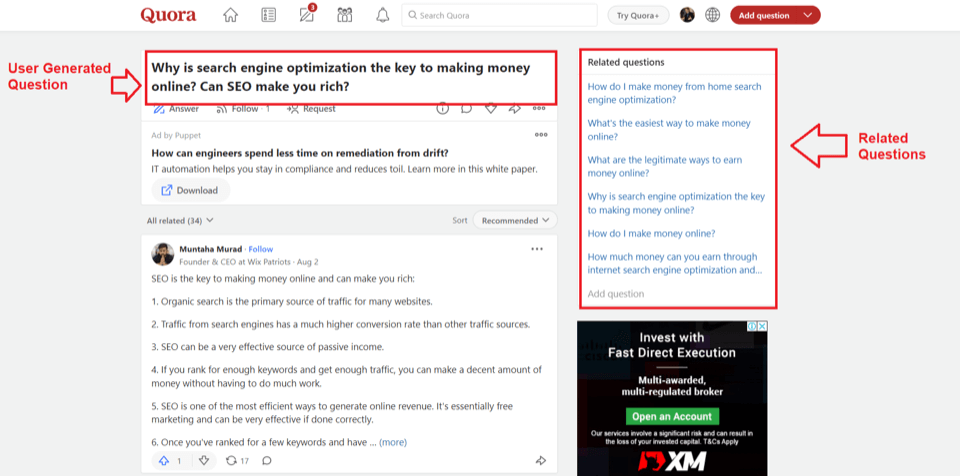Content marketing is imperative to the success of a business these days. In fact, 55% of successful content marketing strategies focus on improving the quality of their content.
When you’re creating content for your brand or business, it’s important to think about more than just the words on the page or things such as formatting, images, and overall structure. It’s not enough to just do some keyword research, hit publish, and hope for the best.
Even if you get tons of eyeballs on your pages by creating optimized SEO content, you have to find out if people are just reading your content or if they’re actually taking action. Moreover, is your content compelling enough to share and spread around the internet?
If you want your website content to be successful, you need to make sure your writing follows some basic best practices that incite action. If you can follow these tips, you’ll be well on your way to publishing content that resonates with your audience and drives results.
1. Start with Keyword Research
If you want your content to rank in Google and drive organic traffic, keyword research is a must. You need to understand what people are searching for before you can start creating useful SEO content that meets their needs.
There are a number of different keyword research tools out there, but our personal favorites are Ahrefs and Semrush. These SEO tools will help you discover high-traffic keywords and sought-after questions that you can target in your content.

Source: Ahrefs
You can also opt to use free SEO tools to help with writing your website content. Google Keyword Planner and Ubersuggest work well for this.
Once you have a list of target keywords, it’s time to start creating!
Keep in mind that your goal should be to create content that’s not only keyword-rich, but also informative, interesting, and engaging. Don’t stuff your content with keywords just for the sake of it. This will only serve to irritate your readers and turn them away.
The goal is to serve up compelling SEO content by creating articles that your audience is actually looking for to help them find a solution to their problems. Doing so will drive action and results for your business.
2. Write for Your Audience, Not Yourself
It’s important to remember who your audience is when creating content. Write for them, not for yourself.
Your readers are the ones you need to appeal to, so it’s important to consider their needs and wants when creating SEO content.
In order to find out what they truly want, you must conduct market research. This will aid you in preparing your website content by answering the following questions:
- Who are you writing for?
- What do they want to know?
- How can you help them?
- What problems do they need to solve?
Once you know the answers to these questions, you can start creating content that’s tailored to your audience.
Keep in mind, however, that your audience will change over time. As such, it’s important to regularly conduct market research to ensure you’re always creating content that’s relevant and useful to them.
Failing to do this will result in creating content that no one cares about, which is a wasted effort.
So, where do you find the information that’s going to help you in creating powerful SEO content that drives results?
There are a few key places you can look, including:
- Your website’s analytics
- Customer surveys and feedback
- Social media comments and posts
- Online forums and message boards
- Niche-related groups
- Q & A sites
Some of our favorite places to find customer data that inspires written content on your website are Facebook, Reddit, and Quora.

By taking the time to understand your audience, you can create content that will not only attract them but also help you to achieve your business goals.
3. Prioritize Search Engine Optimization (SEO)
If you want your website content to be seen by as many people as possible, you need to optimize your blog content for search engines when writing.
This is largely due to 46% of successful content marketers making SEO a priority.
SEO is the process of optimizing the content you’re creating so that it ranks higher in search engine results pages (SERPs). The higher your content ranks, the more likely people are to find and read it.
There are a number of factors that contribute to strong SEO, including:
- The use of keywords and keyphrases
- The quality of your content
- The length of your content
- The overall design and user experience of your website
- How often you publish new content
To improve the SEO of your blog posts, start by creating content that focuses on on-page SEO, link building, and technical SEO.
On-page SEO is the process of optimizing your content for specific keywords and key phrases. This includes things like:
- Using keyword-rich titles and descriptions
- Including keywords throughout your content
- Using alt tags to describe images
Link building is the process of creating links from other content websites back to your own. This helps to improve your website’s SEO by:
- showing search engines that your site is popular and trusted
- Increasing the number of visitors to your site
Technical SEO is the process of optimizing your website’s design and infrastructure to make it easier for search engines to crawl and index your content. This includes things like:
- Optimizing your website’s code
- Creating an XML sitemap
- Setting up redirects
By prioritizing SEO, you can ensure that your content is seen by as many people as possible.
4. Target One Main Topic Per Post
If you truly want to create influential content, you need to focus on one main topic per post. Trying to cover too many topics in a single article will only serve to dilute your message and confuse your readers. You can always link to other relevant content to improve the user experience anyway.
When creating SEO content, think about what you want your readers to take away from it. What’s the one thing you want them to remember? Once you have that figured out, make that the focus of your article.
Don’t try to cram too much information into a single post. This will only overwhelm your readers and make it difficult for them to process everything you’re trying to say. It’s important to be clear, concise and focused if you want your content to be successful.
If you can target one main topic, stick to it, and ensure the title of your posts accurately reflect the content, you’ll be well on your way to creating strong SEO content.
5. Decide on a Content Format
There are a number of different content formats you can choose from when creating your posts. Some of the most popular include:
- How-to guides
- Listicles
- Question and answer format
- Tips and tricks articles
- Product reviews
- Case studies
- Expert interviews
The options are endless, so it’s important to find a content format that works well for both you and your audience.
One thing is for sure, blog posts are a must. This is because 77% of internet users read blogs.
The format you choose will likely depend on the topic you’re writing about and what you want your readers to take away from your website content. If you’re creating a how-to guide, a step-by-step format will probably work best.
On the other hand, if you’re creating a listicle, a numbered or bullet point format will be easier for readers to digest.
No matter what content format you choose, make sure it’s easy to read and understand. The goal is to keep your readers engaged, so find a format that works best for both you and them.
6. Write in a Clear, Concise Style
Keep this in mind:
The average user leaves a website after 15 seconds. To combat this, it’s important to improve the user experience.
How?
When creating SEO content, it’s important to keep things clear and concise. No one wants to read a wall of text, no matter how interesting the topic may be.
People have short attention spans nowadays, so you need to get your point across quickly and effectively if you want them to stick around. Breaking up your text with headlines, subheadings, and bullet points will help to make your content more digestible.
It’s also important to use simple language that can be understood by everyone. Avoid using industry jargon or overly complicated words and phrases. The goal is to communicate your message in a way that’s easy for people to understand.
If you can do this, you’re well on your way to creating strong SEO content that will resonate with your audience.
If you want to take it a step further, find a unique angle or approach that appeals to your audience. Just rehashing the same boring content that floods the internet might get you some traffic, but it doesn’t create action, sales, trust, or loyalty.
7. Promote Your Content
Creating great SEO content is only half the battle – you also need to make sure people are actually seeing it.
There are a number of ways you can promote your content and get visibility, including:
- Social media
- Email marketing
- Guest posting
- Social bookmarking sites
- Content syndication
Social Media
Sharing your content on social media platforms like Facebook, Instagram, Twitter, and LinkedIn is essential to get visibility. Make sure to use relevant hashtags and keywords so that people can easily find your content. Social media marketing is so essential for creating SEO content that 95.9% of bloggers use it to promote their web content.
However, it’s not just about throwing out a few posts in an effort to drive traffic. If you truly want to be successful in getting more eyeballs on your website’s written content, then you need to actively engage your followers, publish consistently, and understand what your audience needs by hanging out where they do and actively building a community.
Don’t make the same mistake most marketers do and take the “set it and forget it” approach. If you want to get results from your content, you need to be willing to put in the work or hire a social media manager to do it for you.
Email Marketing
Using email marketing to promote your SEO-optimized content is a great way to create a substantial amount of direct traffic. Send an email to your subscribers with a link to your latest blog post or article and encourage them to share it with their networks.
Email marketing can also be used to generate leads by offering a free downloadable content upgrade, like an eBook or white paper, in exchange for an email address.
Guest Posting
Guest posting is simply writing a guest post for another website in your industry and including a link back to your own website content. This is a great way to get exposure to your website and build relationships with other bloggers in your industry.

Just make sure that you’re only guest posting on high-quality websites that are relevant to your niche. Otherwise, you could end up with a link from a low-quality website, which could actually hurt your SEO.
Social Bookmarking Sites
Social bookmarking sites like Pinterest, Mix, and Scoop.It are a great way to get more people to see your content. When you submit a new blog post or article, be sure to include an image and a brief description to make it more likely that people will click through to your site.
Content Syndication
Content syndication is the process of creating content to be published on other sites. This is a great way to get more exposure to your content and improve your SEO.
When syndicating your content, make sure to use the “rel=canonical” tag so that search engines know that the original source of the article is your website. This will help to prevent any duplicate content issues.
There are a number of ways to syndicate your content, including:
- Submitting articles to article directories
- Pitching guest posts to other blogs
- Republishing your content on Medium or LinkedIn
By syndicating your content, you can reach a wider audience and increase your readership.
8. Measure Results and Adjust Your Strategy Accordingly
The final step in creating strong SEO content is to measure your results and adjust your strategy accordingly.
Use Google Analytics to track how much traffic you’re getting from your content marketing efforts. You can also track your sales, and how many people are subscribing to your email list or following you on social media.
If you’re not seeing the results you want, don’t be afraid to experiment with different strategies. Try different types of content, different distribution channels, and different promotional techniques. The key is to keep testing until you find what works best for your business.
The key is not to just look at the data, but to understand it and adjust. To do this, make sure you’re tracking your position on the search engines for important keywords and other KPIs that can help you make sense of your business metrics.
The trick is to figure out why you have improved or declined and adjust accordingly.
Final Thoughts
By following these best practices, you can create strong SEO content that will help you attract more visitors to your website. Just remember to be patient, experiment with different strategies, and measure your results so you can continue to improve your content marketing efforts.
If you need help along the way, you may consider checking out the BESTSEO services and digital marketing companies to work with. Or for more DIY tips and tricks, be sure to follow the BESTSEO blog.

